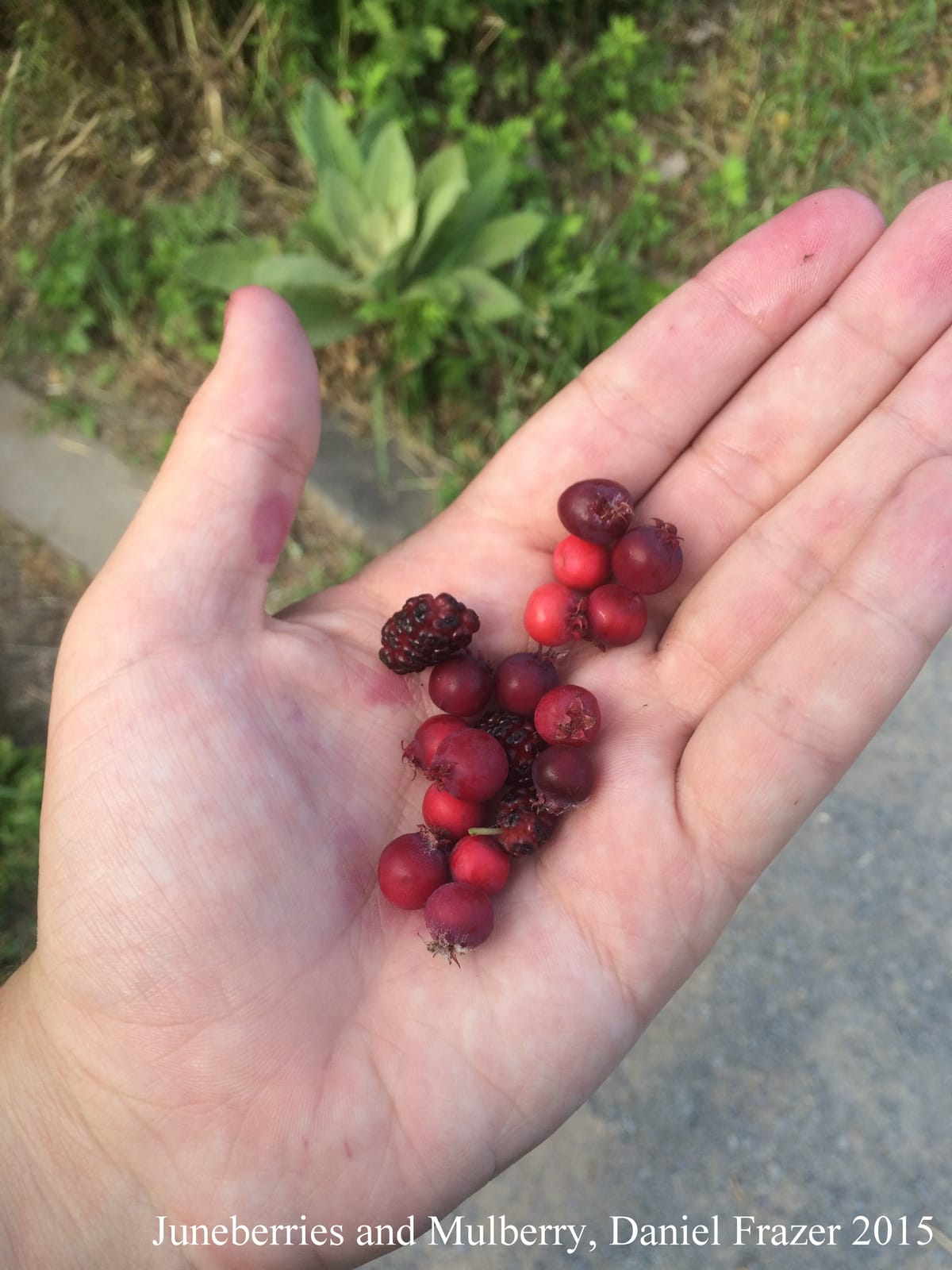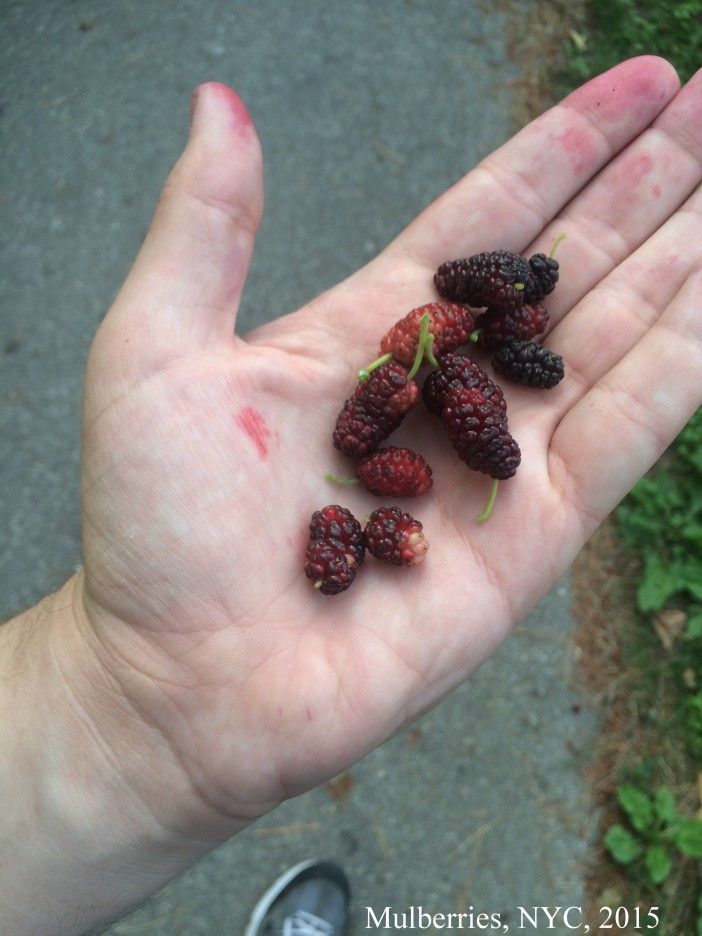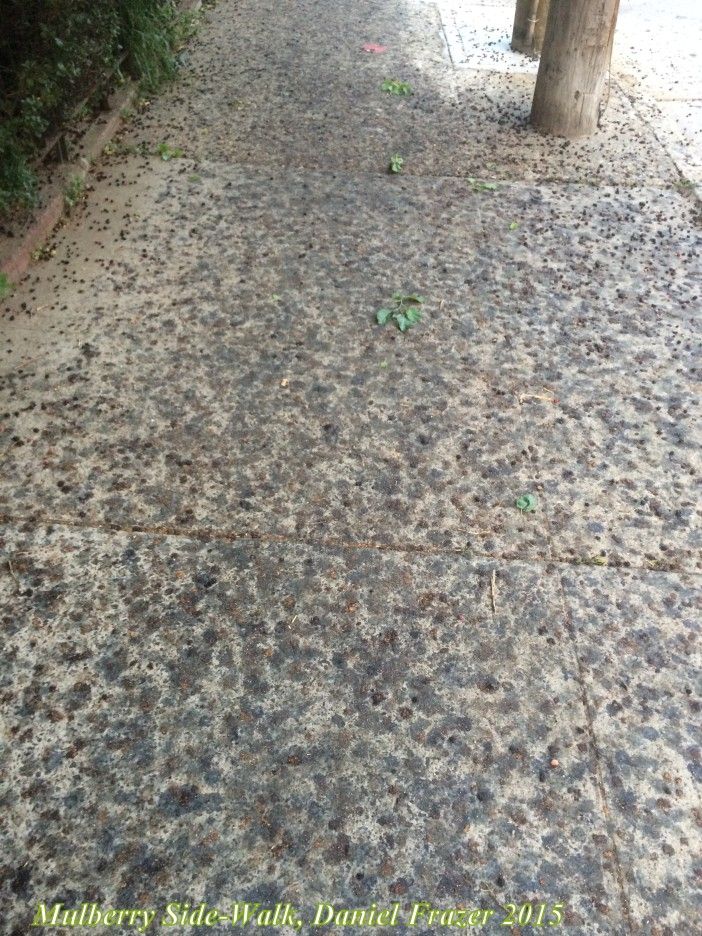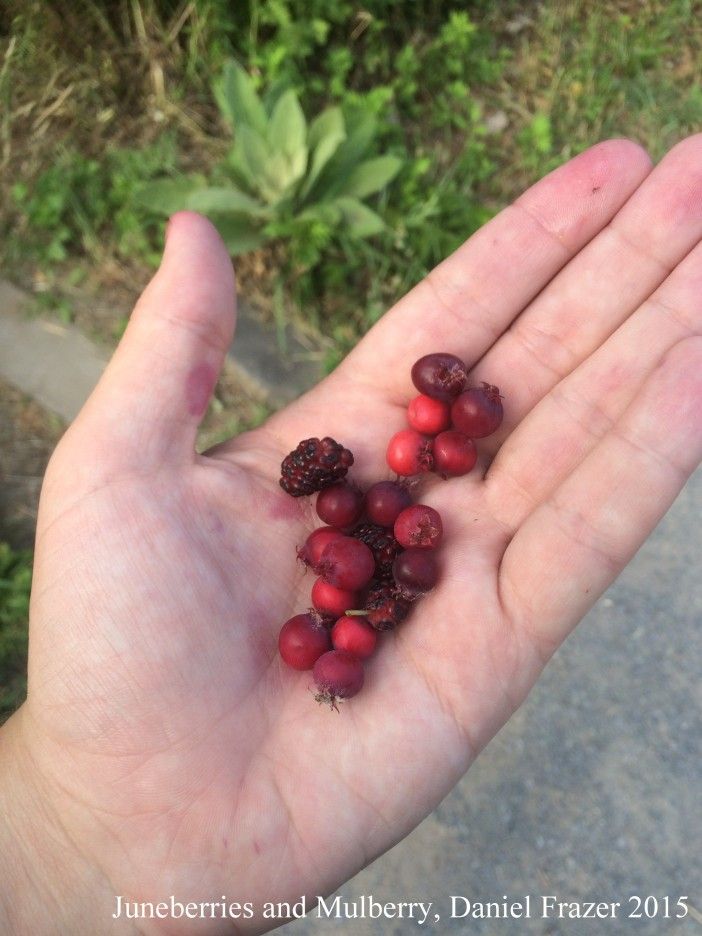A Walk On The Wild Side: Foraging For Edible Berries In Southern Brooklyn


Often one of the best things about Brooklyn is that occasionally you get the illusion that you’re out of New York City. This past Sunday, I got such an illusion while strolling around and picking some of the many beautiful, ripe berries that are around in the beginning of June. Most famous of these are mulberries, but my particular favorite are juneberries.
As a third-generation Brooklynite, I initially had the same aversion that many others have to eating any fruit that grows wild in Brooklyn. However, a few years ago, an elderly friend from Ukraine assured me that she had been eating mulberries around Brooklyn for twenty years now and she’s still here. Some research revealed that mulberries — and many other fruiting trees around Brooklyn — are actually pollution resistant!

In years past, Brookyn’s mulberries were relished by many and some older folks I’ve spoken with have told me stories about walking around Bensonhurst, filling their hats with mulberries and bringing them home to mix with ice cream. One woman even told me that in the 1940s, she’d sneak into peoples’ backyards to pick as many as she could. (We don’t recommend that one, though!)
On this particular Sunday, time seemed a bit more relative than usual, the many robins were singing their flutey songs, the weather was perfect, and the dappled light made a delicate pattern on the ground below. Joining (though not on purpose) a large Latvian family, we picked fresh mulberries and juneberries while watching the birds in their antics over the bay. The butterflies seemed to keep time with the robin’s song, and it was perhaps, overall, my happiest day of the season so far. There is something about picking berries, being with birds and the insects, that leaves you mollified in a way that nothing else quite can.
Mulberries and juneberries are just some of the many edible fruits and vegetables that grow wild all around New York. In Southern Brooklyn, we’re particularly lucky to have many mulberry trees. Look for ripe mulberries by finding the huge purple stains along the ground. As a word of caution, if you’re ever unsure about a berry, avoid it! Brooklyn has very few poisonous plants around but it is always a good idea to practice some caution. Mulberries and most other berry trees will only have viable fruit for another two or three weeks at most — so live on the wild side and give it a try.
Here are some quick facts:
- NYC has both white and red mulberry trees, but red are more common and taste a bit more familiar, sort of like a firm-but-mild-tasting raspberry.
- All mulberries start off a fairly creamy, white color before ripening.
- Mulberries are an excellent source of antioxidant vitamins and calcium.
- While many will eat mulberries right off the tree, theres nothing wrong with a quick rinse with cold water.
- Juneberries are reminiscent of blueberries in taste, yet they’re actually related to the apple.
- Juneberries get their name from ripening in the early part of june.
- Unlike mulberries, juneberries are more commonly found near water.
Occasionally, you will also find apple trees around New York — there are at least six around Bensonhurst. These apples are small and tart and reminiscent of lady apples that are easily found in many grocery stores. However, any apples or even pears that you find now are not ready for picking just yet and would still be pretty inedible.

Living in a city as developed as New York, it’s important to take those little chances to get back to our roots, to let ourselves be entertained by the simple things, like purple stained faces and hands from picking mulberries.
What memories do you have of Brooklyn’s mulberries?
Check out this website to see if there are any edible plants near you or your favorite parks.
Daniel Frazer is an amateur naturalist and birder born and raised in Southern Brooklyn. Daniel spends an inordinate amount of time birding around Brooklyn and is hoping to see every bird species this city has to offer. He write a “wildlife and nature” column for Bensonhurst Bean. See more of his articles and photos here.




